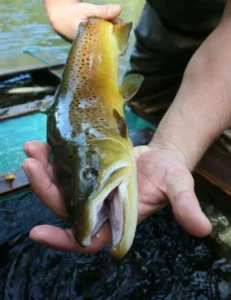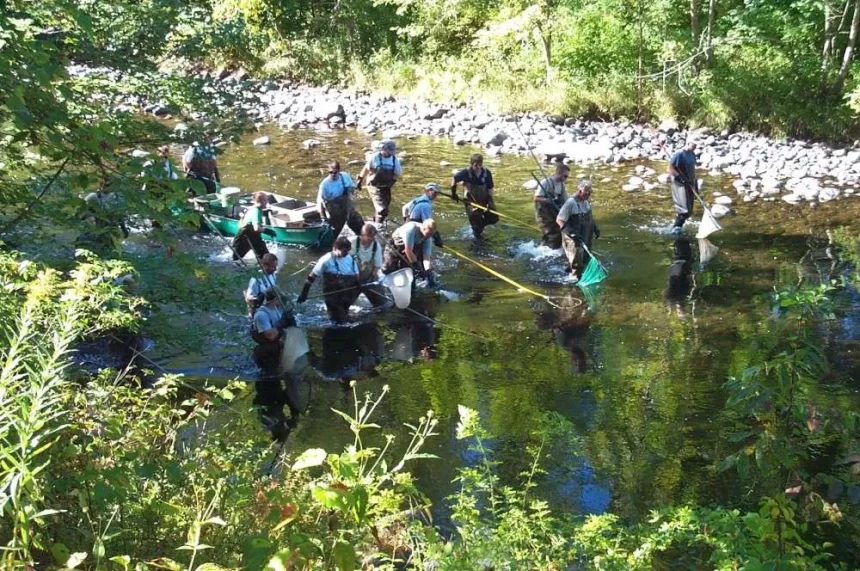By Craig Springer, USFWS
Excise taxes paid by fishing tackle manufacturers and a tax on motorboat fuel yield reliable and steady funding for the state agency fish biologists to research and manage the fishery.
Connecticut’s Farmington River, Arkansas’s White River, and New Mexico’s San Juan River—the three places could not be more different—from the high arid desert to the Ozark highlands, and the Atlantic slope streams. But they have one thing in common, cold water emanating from a dam and the kind of great trout fishing you read about.
Tailwaters produce some the best trout fishing because the water released out of dams is consistently cold, coming from the deepest part of the reservoir above. And trout love it. The Farmington River has other attributes going for it—it is a federally designated Wild and Scenic River, and fisheries biologists with the Connecticut Department of Energy and Environmental Protection (CT DEEP)have invested a great amount of energy over the span of decades into managing it for a trophy brown trout fishery.
The Federal Aid in Sport Fish Restoration Act (Dingell-Johnson) as well as state fishing license and stamp fees make their work possible. Excise taxes paid by fishing tackle manufacturers and a tax on motorboat fuel yield reliable and steady funding for the state agency fish biologists to research and manage the fishery.
The Farmington River Trout Management Area (TMA), created in 1988, is one of 19 TMAs in the state, all managed uniquely to produce quality fishing. The Farmington River below Goodwin Dam affords 25 miles of great water, managed with brown trout in mind.

In 1993, the CT DEEP started a “survivor” brood stock strain of brown trout to produce offspring better suited for long-term persistence in the river. The so-called survivors are brown trout stocked in the Farmington River that evade the creel or live on to spawn and grow large. These fish that survive are collected in the autumn each year and spawned at the Burlington State Fish Hatchery. The brood are a combination of holdovers and wild fish spawned in the river. They often mix holdovers with wild fish to capture genes from both groups. The offspring of these efforts boast a higher survival rate after stocking than typical hatchery brown trout when stocked back into the Farmington. They provide quality fishing at lower costs.
The CT DEEP biologists plan to use Sport Fish Restoration dollars to expand the Survivor strain developed from the Farmington River for use into other high quality trout streams in Connecticut. It’s worked well in the Farmington TMA, thus far.
Let the numbers speak: wild brown trout population surveys of the Farmington fishery revealed a five-year moving average that went from zero to 500 fish per mile. For all other trout species in the river (brook, rainbow, and tiger trout), that five-year average went from 200 to 1,200 trout per mile—a response to fishing regulations specific to that TMA. These improvements come in the face of significant angling pressure. While a creel survey—in-person interviews of anglers to determine catch rates, angling pressure, satisfaction, and perceptions of fisheries to inform management decisions—is presently underway. These surveys are also funded by Sport Fish Restoration dollars; the most recent survey showed anglers made 26,500 trips per year to the Farmington River TMA, and fished 116,000 hours.
Brown trout are a fickle finny creature and anglers can attest that the bigger they are, the more wary and harder to catch. They have their adherents. The trout colored somewhere between honey and butter are a favorite among those who find joy in the anguish of trying to outwit the capricious trout. There is more of that to look forward to in Connecticut thanks to innovative biologists and Sport Fish Restoration funds.

